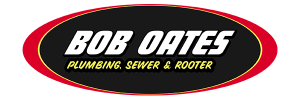Signs of a Sewer Line Belly (And What To Do)
CALL (206) 789-4944
Serving the Greater Seattle Area

Every homeowner’s goal is to maintain a comfortable and safe environment. However, unexpected plumbing issues — and a sewer line belly is pretty high on that list — can quickly disrupt that peace.
Conducting proper, regular sewer inspections are key to healthy drainage and sewage systems staying that way. They’re also essential, once a problem is suspected, in locating exactly where repairs or replacement can be initiated.
At Bob Oates, we use sewer camera inspections to see cracks, breaks, and irregular or out of joint sections of sewer pipe. This includes spotting bellies in your sewer line.
Let’s take a detailed look at what a sewer line belly is, its signs, causes, and the remedial measures available.
What Is a Belly in a Sewer Line?
A belly, sometimes known as a sag, is a section of the sewer pipe that dips lower than the surrounding areas. Ideally, sewer lines should maintain a consistent slope to ensure a smooth flow. However, when a belly occurs, it’s similar to a dip in a road, causing water and waste to pool at that spot.
This condition is not exclusive to newer types of pipes. A belly in a cast iron sewer line, which is an older material, is also quite common.
What Are Signs of a Sewer Line Belly?
Although a belly or a sagged line isn’t necessarily a collapsed line, it does create more backups. This is because the solids are not fully draining out of the pipe. Proper drainage pipes have a continuous slope of ¼” per foot drop to carry away all liquids and solids in a pipe.
Identifying signs of a collapsed (belly) sewer line early can save homeowners from significant hassle and expenses:
- Frequent clogs, blockages and sewage smells: Regular clogs can be frustrating. When caused by a sewer line belly, waste gets trapped in the sag, leading to these obstructions.
- Slow-draining sinks and bathtubs: Water flows via gravity. A belly can hamper this natural flow, causing water to drain slower than usual.
- Gurgling noises: These are often due to air bubbles trapped in the water pooled in the belly. They travel up and out, creating a gurgling sound.
- Pooling water in the yard: Over time, the trapped water in a belly might find its way out, leading to soggy patches in your yard.
What Causes a Belly in a Sewer Line?
Signs of a collapsed line lead to the need of understanding why it happened in the first place. This will aid in preventing future occurrences of bellies. These signs include:
Improper Installation and Planning: One of the primary causes of sewer line bellies stems from inadequate planning and substandard installation. Ensuring proper bedding compaction, using high-quality pipe materials, and setting the correct angle of slope are essential.
A sewer line should have the right gradient, allowing gravity to efficiently carry waste away from homes or buildings. When this isn’t done correctly, sagging or bellies can easily develop.
Natural Factors and Ground Movement: Expert installation is fundamental to a healthy sewer system. Nonetheless, natural factors play a significant role in the formation of sewer line bellies.
While events such as earthquakes are rare in the Pacific Northwest, the growth of tree roots is not! One of the biggest solutions the Bob Oates team provides on a daily basis is how to tackle roots in pipes.
Even daily phenomena like sun, rain, and varying temperatures leads to shifting soil. This movement can disturb even well-installed sewer lines, potentially creating bellies. Finally, extreme temperature fluctuations can affect the soil’s stability and directly impact the pipe’s structural integrity.
Pressure from Heavy Loads: Sewer lines are constructed to be durable. However, continuous pressure from above can exert undue stress on the pipes. This is especially from heavy vehicles parked or driven over where sewer lines are located.
Over time, this repeated pressure can cause the line to sag, leading to bellies. While modern trenchless sewer line repair professionals employ advanced tools, like video cameras and locator wands, to ensure an optimal slope, even the best-laid pipes can sag if the ground underneath becomes unstable.
How Are Sewer Line Bellies Diagnosed?
A belly can be a flat or a sagging section that holds water all the time, never properly flushing out all the waste. This leads to a buildup of what we in the industry call “muck.”
Regular sewer inspections can help identify problems before they escalate. Modern technology has facilitated easier diagnoses of issues like bellies by conducting sewer camera inspections. Bob Oates conducts these inspections with a specialized camera that’s inserted into the sewer line.
Sewer camera inspections do not disrupt your building’s interior or property landscaping. The waterproof robotic camera and attached optic cable are inserted into the pipe being investigated through a drain or an outside access point.
The camera can be sent the entire length of the pipeline, from the building to the curbside connection with the municipal sewer line. The video recording is capable of viewing the entire 360-degree circumference of the pipe’s interior wall.
This provides a real-time visual feed that our technician is able to view of the pipe’s interior, clearly showing any bellies or other anomalies.
How Are Bellied Sewer Pipes Repaired?
A frequently asked question is, “how serious is a belly in a sewer line?” The truth is, the longer it’s left untreated, the more significant the issues it can cause.
Thankfully, there are efficient solutions:
- Pipe Relining: A less invasive method, pipe relining involves placing a flexible, resin-coated tube inside the faulty pipe. This tube, when hardened, acts as a new lining, improving flow and sealing any minor leaks.
- Pipe Replacement: In cases where the belly is too pronounced or the pipe is too damaged, the best course of action is to replace the affected section. This method, while more invasive, offers a long-term solution.
Note: At Bob Oates, we can always attempt to clean a sagging or bellied line using our water jetter, but who wants the sewer possibly backing up into their home? Not to mention the wasted time, effort and money? Nobody! So if you have signs of a belly in your sewer line call Bob Oates Sewer & Rooter today to get the best advice on how to resolve them — people helping people, that’s what we do!
How Much Does It Cost To Fix a Belly in a Sewer Line?
Cost is always a significant concern. The cost of sewer belly repair can vary widely based on location, severity, and chosen repair method. Typically, relining is more cost-effective and quicker than replacement. However, it’s essential to weigh the long-term benefits against the immediate costs.
Professional drain cleaning services and sewer repair companies likely offer financing, and have policies in place that work best for them. For example, at Bob Oates, we offer several different financing options, with our most popular one being 12 months, same as cash, OAC.
If you find yourself pondering “when to fix a pipe belly?”, the best advice is not to delay. Early intervention can often lead to more affordable and less complicated repairs.
Wrapping Up
In summation, being proactive about understanding the signs of a sewer line belly and seeking professional guidance when in doubt ensures the longevity of your home’s sewage system.
Bob Oates Sewer & Rooter is always here to assist with preventive maintenance checks and any repairs or replacement your plumbing and sewer systems need. Give us a call or schedule an appointment today!
CALL (206) 789-4944
Serving the Greater Seattle Area





